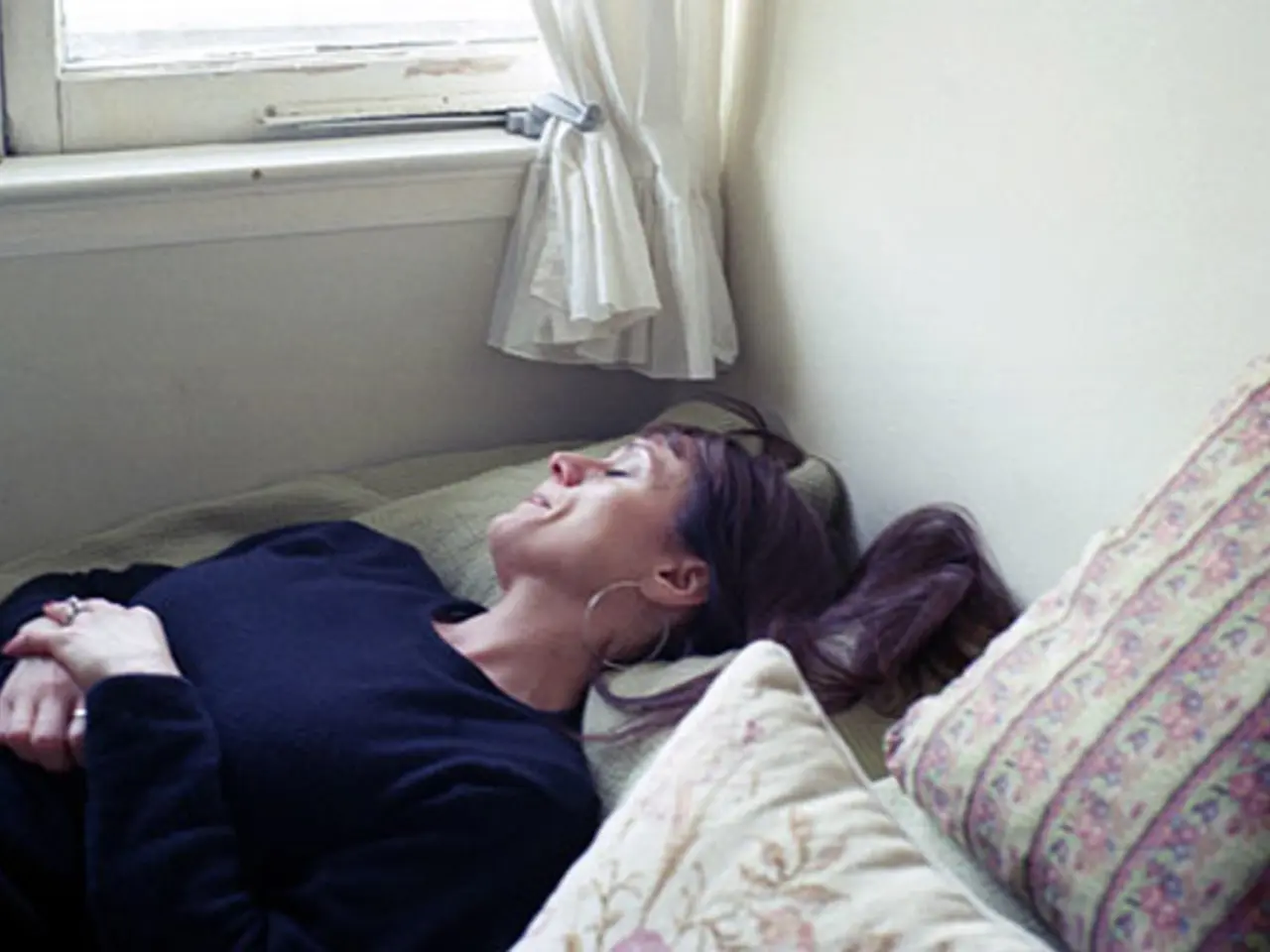Improving Sleep with Ankylosing Spondylitis: A Guide
In a bid to alleviate nighttime pain and improve sleep quality for those living with Ankylosing Spondylitis (AS), a form of arthritis that causes inflammation in the joints of the spine, a series of effective strategies have been identified.
Consistent Pre-Bedtime Routine
Engage in gentle stretching exercises focusing on spine mobility and areas of stiffness about an hour before sleep. Movements like cat-cow stretches, shoulder rolls, and neck stretches can reduce muscle tension and enhance comfort without causing pain.
Optimize Bedroom Environment
Keep the bedroom cool (around 65-68°F or 18-20°C) to reduce inflammation and promote sleep. Use blackout curtains to block disruptive light, warm dim lighting in the evening, and avoid blue light from screens.
Supportive Bedding
Use a firm mattress and ergonomic pillows (e.g., lumbar pillows) to maintain spinal alignment. Adjustable beds can help find comfortable sleeping angles, such as elevating the head and legs slightly, reducing pressure on the back.
Pain and Tension Relief
Applying heat therapy or using a heating pad before bed can ease muscle tension. Weighted blankets may also promote relaxation.
Sleep Hygiene and Stress Reduction
Stick to a regular sleep schedule, avoid caffeine and electronic devices before bedtime, and practice relaxation techniques or cognitive-behavioral therapy to reduce stress, which can worsen AS symptoms and disrupt sleep.
Medical Consultation
If pain persists and disrupts sleep, consult a healthcare professional about appropriate nighttime pain management or treatments such as anti-tumor necrosis factor therapy, which has been associated with reduced sleep disorders in AS patients.
Implementing these approaches can help decrease nighttime stiffness and pain, improve sleep quality, and thereby support overall disease management in AS.
Additional Tips
- Flexing the hip a little by putting a pillow under the thigh can also help keep the spine in a more neutral position.
- Placing a pillow between the knees can help reduce tension on the hips and lower back when sleeping on the side.
- Using a thin pillow can help maintain good spinal alignment.
- People who have recently received an AS diagnosis are at a higher risk of developing Obstructive Sleep Apnea (OSA).
- A high intake of anti-inflammatory foods, such as those with omega-3 polyunsaturated fatty acids and fiber, has an association with lower condition activity.
- Dietary fiber intake positively affects AS and its symptoms.
It's important to note that a small study found that latex mattresses reduced peak body pressure more and helped distribute pressure more evenly than polyurethane mattresses. However, extremely firm mattresses may worsen pain because they do not conform to a person's body and interfere with the spine's natural alignment.
Lastly, maintaining mobility and flexibility through regular exercise and good posture can help a person reduce pain and prevent stiffness in AS. Relaxation techniques can further reduce chronic pain and stress, and improve overall well-being.
[1] Mayo Clinic. (2021). Ankylosing spondylitis: Lifestyle and home remedies. [online] Available at: https://www.mayoclinic.org/diseases-conditions/ankylosing-spondylitis/lifestyle-and-home-remedies/txt=lifestyle-and-home-remedies
[2] National Institute of Arthritis and Musculoskeletal and Skin Diseases. (2021). Ankylosing Spondylitis. [online] Available at: https://www.niams.nih.gov/health-topics/ankylosing-spondylitis
[3] Arthritis Foundation. (2021). Ankylosing Spondylitis. [online] Available at: https://www.arthritis.org/diseases/ankylosing-spondylitis
[4] Mayo Clinic. (2021). Obstructive sleep apnea. [online] Available at: https://www.mayoclinic.org/diseases-conditions/sleep-apnea/symptoms-causes/syc-20373475
[5] National Sleep Foundation. (2021). Cognitive Behavioral Therapy for Insomnia. [online] Available at: https://www.sleepfoundation.org/insomnia/treatment/cognitive-behavioral-therapy-insomnia
- For those with Ankylosing Spondylitis (AS), practicing regular exercise and good posture is crucial to reduce pain and prevent stiffness.
- A study found that latex mattresses may reduce peak body pressure more and distribute pressure more evenly than polyurethane mattresses, although extremely firm mattresses might worsen pain due to poor body conformity.
- People with AS are at a higher risk of developing Obstructive Sleep Apnea (OSA), so it is essential to be aware of sleep apnea symptoms.
- Cognitive-behavioral therapy (CBT) is a treatment proven to address insomnia and reduce stress, thereby benefiting those with AS.
- A high consumption of anti-inflammatory foods, such as those rich in omega-3 polyunsaturated fatty acids and fiber, may lower disease activity in AS patients.
- Maintaining a consistent dietary fiber intake is beneficial for managing AS symptoms.
- In terms of mental health, stress can exacerbate AS symptoms and disrupt sleep; therefore, techniques like relaxation strategies can help reduce chronic pain and stress.
- If the lack of sleep continues to cause discomfort, it is advised to consult a healthcare professional about appropriate treatments for nighttime pain management, such as medication aimed at reducing tumor necrosis factor.
- Regular eye checks are also important, as AS patients may be at risk of developing eye-related issues due to systemic inflammation. Include eye health in your health-and-wellness routine to maintain good overall well-being.




